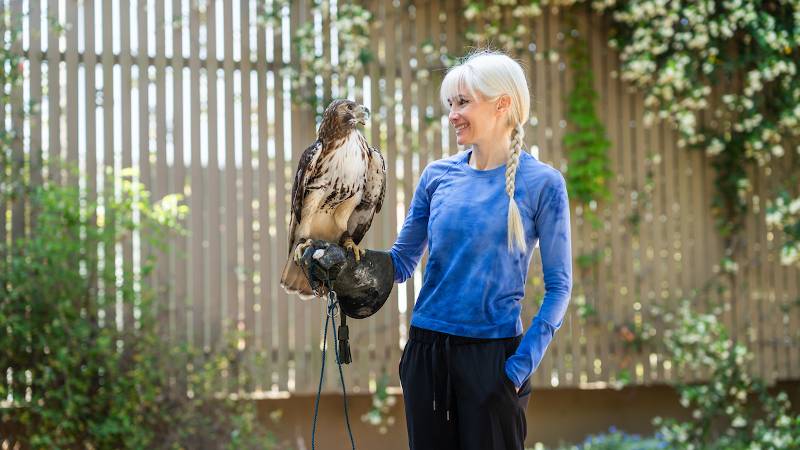Researchers have discovered that soaring birds, such as eagles and vultures, utilize a specialized air sac within their lungs to optimize their flight performance. The findings, published in Nature, shed new light on the intricate relationship between respiration and locomotion in these magnificent creatures.
Emma Schachner, an evolutionary biologist at the University of Florida, led an international team of scientists in uncovering the role of the subpectoral diverticulum (SPD), an air-filled sac located between the bird’s flight muscles. Unlike mammalian lungs, which simply inhale and exhale, bird lungs feature a complex system of air pockets that pump air in a unidirectional flow.
Accidental Discovery Leads to Groundbreaking Research
The discovery of the SPD occurred serendipitously while Schachner was working on another project involving red-tailed hawk anatomy. Upon examining CT scans, she noticed a prominent bulge situated between the bird’s downstroke and upstroke flapping muscles. This observation prompted her to hypothesize that the air sac might play a crucial role in soaring mechanics.
To test this hypothesis, Schachner collaborated with evolutionary biologist Andrew Moore from Stony Brook University and avian surgery specialist Scott Echols. The team analyzed micro CT scans of 68 bird species, representing a wide range of avian diversity, to determine the presence or absence of the SPD. The results were clear: the air sac has evolved independently in soaring lineages at least seven times and is absent in all nonsoaring birds.
Computer Models Reveal SPD’s Impact on Flight Mechanics
To further understand the SPD’s influence on flight mechanics, Schachner partnered with Karl Bates from the University of Liverpool to create digital models of the air sac’s effect on the pectoralis muscle in red-tailed and Swainson’s hawks. The models suggested that inflation of the SPD increases the lever arm of the pectoralis muscle, enhancing the bird’s ability to maintain a static, horizontal wing position during soaring.
“It has long been known that breathing is functionally linked to locomotion, and it has been demonstrated that flapping enhances ventilation,” Schachner said. “But our findings demonstrate that the opposite is also true in some species. We have shown that a component of the respiratory system is influencing and modifying the performance of the flight apparatus in soaring birds, who are using their lungs to modify the biomechanics of their flight muscles.”
The research team also discovered that the anatomy of the pectoralis muscle in soaring birds differs significantly from that of nonsoaring birds, further optimizing force generation. These findings provide compelling evidence that the SPD has evolved to enhance the soaring capabilities of these birds.
“The evolutionary story here couldn’t be clearer,” Moore said. “Our data indicate that the SPD only evolves in birds that soar, and did so at least seven times independently across distantly related soaring lineages. So, whether you’re looking at a Western gull, a turkey vulture, a sooty shearwater, a bald eagle, or a brown pelican, they’ve all got an SPD that improves their ability to soar.”
The study not only reshapes our understanding of the interaction between locomotion and respiration in birds but also suggests that bird lungs may have many other undiscovered nonrespiratory functions. As Schachner noted, “Birds are wildly diverse. Think about how different an ostrich is from a hummingbird or a penguin. It is likely that their lungs are involved in an array of really fascinating functional and behavioral activities that are waiting to be discovered.”
This groundbreaking research was made possible through funding from the Louisiana State University Research Enhancement Program and the University of Florida Gatorade Award Allocation.
If our reporting has informed or inspired you, please consider making a donation. Every contribution, no matter the size, empowers us to continue delivering accurate, engaging, and trustworthy science and medical news. Independent journalism requires time, effort, and resources—your support ensures we can keep uncovering the stories that matter most to you.
Join us in making knowledge accessible and impactful. Thank you for standing with us!

